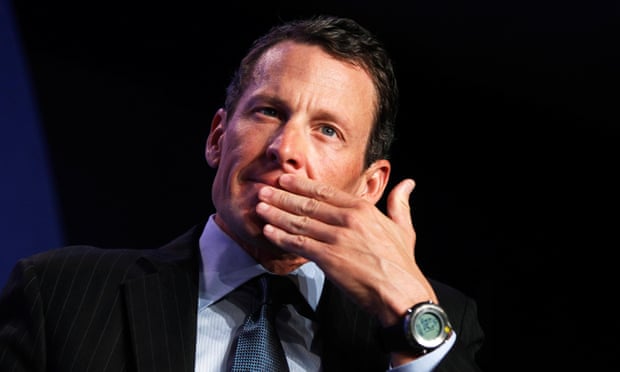A federal lawsuit against the former cyclist will proceed to a jury trialArmstrong accused of fraud against government under False Claims Act
 Lance Armstrong is on course for a trial in a 2010 case stemming from his performance-enhancing drug use. Photograph: Lucas Jackson/Reuters
Lance Armstrong is on course for a trial in a 2010 case stemming from his performance-enhancing drug use. Photograph: Lucas Jackson/Reuters
A federal judge on Monday refused to block the government’s $100m lawsuit against Lance Armstrong, putting the former cyclist on course for trial in a 2010 case stemming from his performance-enhancing drug use.
The lawsuit was filed by Armstrong’s former US Postal Service teammate Floyd Landis. The federal government joined in 2013 after Armstrong publicly admitted he cheated to win the Tour de France seven times from 1999-2005. Armstrong was stripped of those titles and banned from competition.
Timeline: Lance Armstrong’s journey from deity to disgrace
Armstrong has also taken huge hits financially, losing all his major sponsors and being forced to pay more than $10m in damages and settlements in a series of lawsuits. The Landis lawsuit would be the biggest by far, and the ruling from US district judge Christopher Cooper in Washington was a major setback for Armstrong with a trial most likely in the fall.
Landis, himself a former doping cheat who was stripped of his 2006 Tour de France title, sued Armstrong under the federal False Claims Act, alleging Armstrong and his team committed fraud against the government when they cheated while riding under the Postal Service banner. According to court records, the contract paid the team, which was operated by Tailwind Sports Corp, about $32m from 2000 to 2004. Armstrong got nearly $13.5m.
The law allows Landis and the government to sue to get that money back and for “treble” damages, or triple the amount, and Armstrong could be forced to pay all of it. Landis stands to receive up to 25% of any damages awarded.
Armstrong claims he and the team don’t owe the Postal Service anything because the agency made far more off the sponsorship than it paid. Armstrong’s lawyers have introduced internal studies for the agency that calculated benefits in media exposure topping $100m.
The government has countered that the negative fallout from the doping scandal tainted the agency because of its association with Armstrong.
Cooper’s ruling said Armstrong makes a “persuasive case,” but that any decision on damages should be left to a jury.
“Giving Armstrong ‘credit’ for the benefits he delivered while using (performance-enhancing drugs) could be viewed as an unjust reward for having successfully concealed his doping for so long,” Cooper wrote. “(But) disregarding any benefits USPS received from the sponsorship could bestow the government with an undeserved windfall. The same could be said of Landis, whose role in this entire affair some would view as less than pure.”
Landis attorney Paul D Scott said he was delighted” to see the case move toward trial.
“The finish line for Mr Armstrong ... is fast approaching,” Scott said.
Noughties revival? How charity wristbands are making a comeback
Armstrong attorney Elliot Peters said the court’s decision laid out Armstrong’s case, even as it let the lawsuit proceed.
“There is no actual evidence of any quantifiable financial harm,” to the Postal Service, Peters said. “So the government may now proceed to a trial that, as a practical matter, it cannot win.”
Armstrong had been one of the most popular sports figures on the planet before his cheating confession.
His personal story of recovering from testicular cancer that had spread to his brain, while forcefully denying persistent rumors of doping, had built his Lance Armstrong Foundation cancer charity into a $500 million global brand and turned him into a celebrity.
The foundation, which removed him from its board and renamed itself Livestrong, has struggled in the aftermath as donations and revenue plummeted.
Armstrong’s team was already under the Postal Service sponsorship when he won his first Tour de France in 1999. The media frenzy that followed pushed the agency to sign the team for another five years.
Armstrong’s cheating was finally uncovered in 2012 when the US Anti-Doping Agency, armed with sworn testimony from Landis and other former teammates, moved to strip Armstrong of his titles.
Comments
Post a Comment